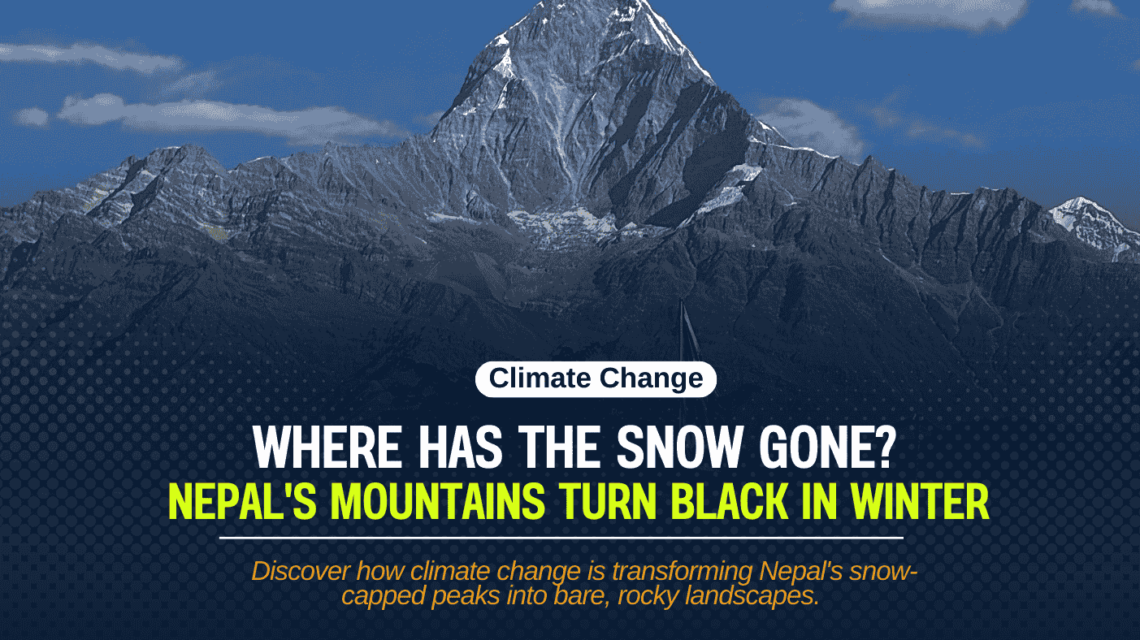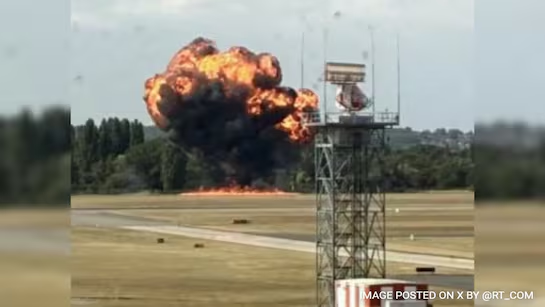In December 2024, people in Nepal’s Manang region woke up to a strange and worrying view. The famous Machhapuchhre mountain, known for its fishtail shape, was no longer white with snow. Instead, it looked dark and bare. This happened during a time of year when snow usually covers everything. It was not just this one mountain. Many other peaks in the Himalayas also showed their rocky faces instead of being white with snow.
A local man named Yangdung Gurung, who has lived in Upper Pisang for 60 years, said he had never seen anything like it. “The snow always covered the mountains,” he said. “Now, even the high peaks are without snow.”
Snow Disappears Across the Region
The change is clear and serious. Mountains like Dhaulagiri, Gangapurna, Lamjung, and Pisang look dry and brown instead of snowy. In the past, snow would pile up to eight feet in many areas. Now, people say there is barely one foot of snow.

This problem is not just in Nepal. In Japan, Mount Fuji didn’t get snow until November 6, 2024. This was the latest snowfall in over 130 years. Usually, it snows there in early October. In Europe, the Alps have lost about one-third of their snow over the past 100 years. In Pakistan, the Hunza region has also seen very little snow. The winter destination of Gulmarg experienced a winter with 80% less snowfall than normal. World info News
Melting Glaciers Show a Dangerous Trend
Scientists say the Himalayan region is losing ice quickly. In just 30 years, the mountains have lost about one-third of their ice. The area with thick snow is shrinking, while the area with only a thin layer of snow is growing fast. A researcher, Dr. Sher Mohammed, said these changes are serious. Even though last winter had a lot of snow, the overall trend is downward. If things don’t change, 70% to 80% of the glacier ice could disappear by the end of this century.
Impact on Water and People
This problem affects more than just the beauty of the mountains. These snowy peaks provide water to about 2 billion people across Asia. For example, the Indus River basin depends on melting snow for most of its water. As the snow disappears, water for drinking, farming, and daily life is at risk.
People in mountain villages are already feeling the effects. Sonamtapke Gurung from Tanki Manang said the weather is very different now. Winters are much colder, and summers are much hotter. There is less snow in the winter and more rain during the monsoon season. These changes are making life harder for local people and damaging the natural environment.
More Risks for Mountain Communities
The loss of snow and ice can cause dangerous events. Melting glaciers can lead to floods from glacial lakes or cause landslides. Plants and animals that live in cold, snowy areas are also in danger. Many mountain towns depend on winter tourism to survive, but that industry could suffer if the snow keeps disappearing.
The eastern parts of the Himalayas, like Nepal and Bhutan, may lose up to 60% of their ice by the year 2100. Even the western parts, which were thought to be more stable, are now showing signs of fast melting.
A Clear Warning from the Mountains
As the white snow turns to black rock, these mountains are sending a clear message. Climate change is not a distant threat. It is happening now, and the effects are visible. People everywhere are asking the same question: “Where has the snow gone?”
For those living near these mountains, the problem is personal and urgent. Standing below the dark peak of Machhapuchhre, it is easy to see how serious this is. Saving these mountains is not just about protecting nature – it is about protecting people’s lives. The world must act now before it is too late.


 Plane Crashes at London Southend Airport
Plane Crashes at London Southend Airport  Trump Slaps Tariffs on Asian Nations, but India Secures Exemption
Trump Slaps Tariffs on Asian Nations, but India Secures Exemption  Crew Abandons Ship After Likely Houthi Strike in Red Sea
Crew Abandons Ship After Likely Houthi Strike in Red Sea  How InnoMake Shoes Make Navigation Safer for the Blind
How InnoMake Shoes Make Navigation Safer for the Blind  New Coronavirus Wave Hits India: What We Know
New Coronavirus Wave Hits India: What We Know  Did India Record the Highest Rainfall in May?
Did India Record the Highest Rainfall in May?